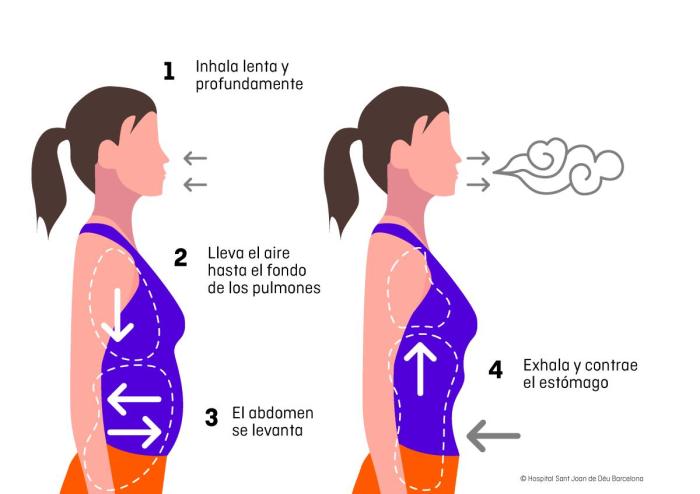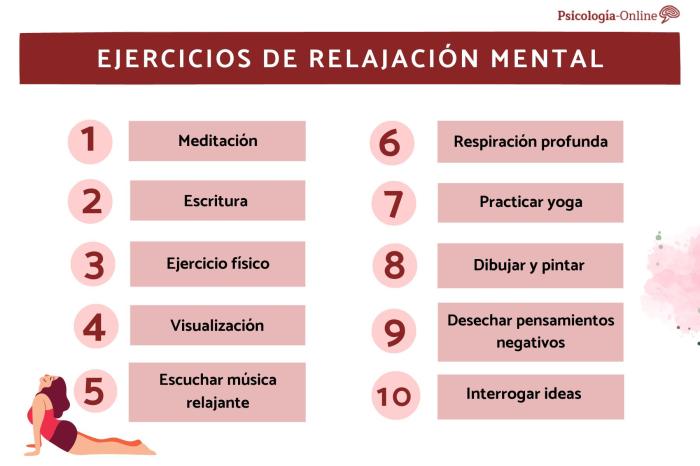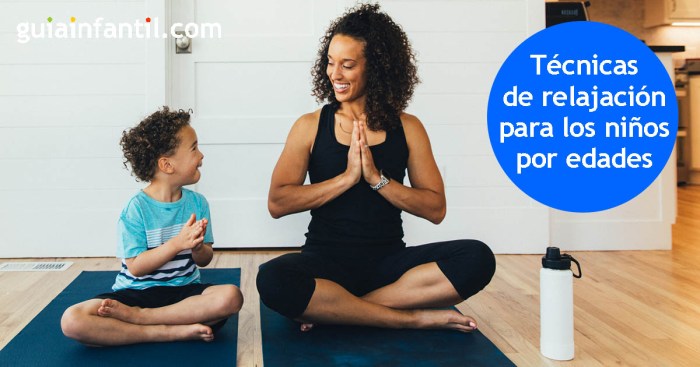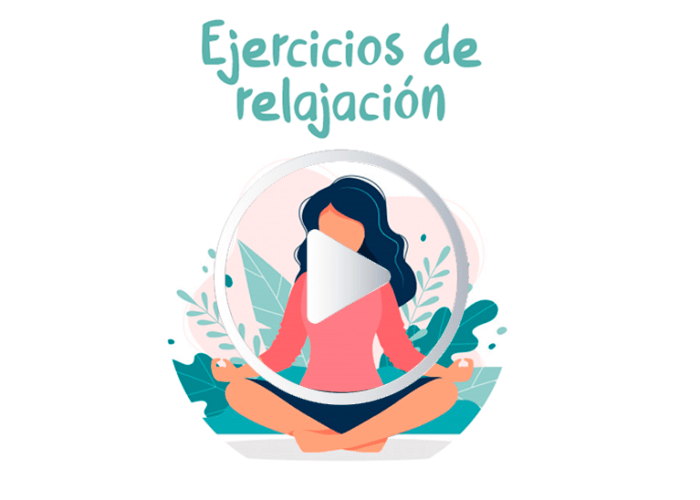Embark on a journey through the realm of relaxation with 10 Breathing Techniques to Enhance Relaxation. Discover the transformative power of breath in fostering tranquility and well-being.
Explore the profound impact of various breathing techniques on the mind, body, and spirit as we delve into each method with curiosity and reverence.
Introduction to Breathing Techniques: 10 Breathing Techniques To Enhance Relaxation
Breathing techniques refer to specific methods or practices that focus on controlling and regulating one’s breath. These techniques are often used to promote relaxation, reduce stress, and improve overall well-being.Using breathing techniques for relaxation is crucial as it helps calm the mind and body, leading to a more peaceful state. By focusing on the breath, individuals can quiet the noise in their minds, relieve tension, and enhance their ability to manage stress effectively.Incorporating breathing techniques into daily routines can have numerous benefits, including improved concentration, better sleep quality, reduced anxiety levels, and increased overall emotional resilience.
These techniques can be practiced anywhere and at any time, making them accessible tools for managing stress in today’s fast-paced world.The practice of using breathing techniques for relaxation dates back thousands of years and can be found in various ancient traditions and cultures. From yoga to meditation to mindfulness practices, breathing techniques have been utilized as a powerful tool for achieving a sense of calm and inner peace.
Diaphragmatic Breathing

Diaphragmatic breathing, also known as belly breathing or abdominal breathing, involves engaging the diaphragm muscle to fully expand the lungs with each breath. This technique differs from regular chest breathing, which is shallower and primarily involves the ribcage.
Physiological Effects of Diaphragmatic Breathing
- Increases oxygen intake: By maximizing lung capacity, diaphragmatic breathing allows for more oxygen to enter the body, promoting better oxygenation of the blood.
- Activates the parasympathetic nervous system: This type of breathing triggers the body’s relaxation response, reducing the heart rate and calming the mind.
- Improves digestion: The rhythmic movement of the diaphragm during deep breathing massages the abdominal organs, aiding in digestion and promoting gut health.
How to Practice Diaphragmatic Breathing
To practice diaphragmatic breathing:
- Lie down or sit comfortably with one hand on your chest and the other on your abdomen.
- Inhale deeply through your nose, allowing the abdomen to rise while keeping the chest relatively still.
- Exhale slowly through your mouth, feeling the abdomen fall as you release the breath.
- Continue this deep breathing pattern for several minutes, focusing on the rise and fall of your abdomen.
Role of Diaphragmatic Breathing in Stress Reduction
Diaphragmatic breathing is a powerful tool for reducing stress and promoting relaxation. By activating the body’s relaxation response, this breathing technique helps lower cortisol levels, decrease anxiety, and improve overall well-being. Regular practice of diaphragmatic breathing can be particularly beneficial in managing chronic stress and enhancing resilience to everyday challenges.
Box Breathing Technique

The Box Breathing Technique, also known as square breathing, is a simple yet effective breathing exercise that can help promote relaxation and reduce stress. This technique follows a specific pattern of breathing in four equal parts, creating a square or box shape.
Four Phases of Box Breathing
- Inhale: Begin by inhaling deeply through your nose for a count of four seconds. Focus on filling your lungs completely with air.
- Hold: After inhaling, hold your breath for another count of four seconds. This allows the oxygen to circulate and be absorbed by your body.
- Exhale: Slowly exhale through your mouth for a count of four seconds, ensuring that you release all the air from your lungs.
- Hold: Lastly, hold your breath again for four seconds before starting the cycle over.
Tip: It can be helpful to visualize tracing a square or box shape in your mind as you practice box breathing to maintain the rhythm.
Effectively Practicing Box Breathing
- Find a quiet and comfortable place to sit or lie down where you can focus on your breathing without distractions.
- Start by practicing box breathing for a few minutes at a time and gradually increase the duration as you become more comfortable with the technique.
- Repeat the four phases of box breathing consistently, aiming for a smooth and controlled breathing pattern.
- Use box breathing whenever you feel stressed, anxious, or in need of a moment to relax and center yourself.
Comparison with Other Breathing Exercises
- Box breathing is similar to other relaxation techniques such as deep breathing and diaphragmatic breathing, but its structured four-phase approach can help individuals focus and maintain a steady breathing rhythm.
- Compared to other breathing exercises, box breathing provides a clear and easy-to-follow pattern that can be beneficial for beginners or those who struggle with maintaining a consistent breathing technique.
Progressive Muscle Relaxation with Breathing
Progressive Muscle Relaxation (PMR) is a technique that involves tensing and then relaxing specific muscle groups in the body. When combined with breathing techniques, PMR can enhance relaxation by promoting a deeper sense of calm and reducing stress levels.
Process of Combining Muscle Relaxation with Breathing Exercises
- Begin by finding a quiet and comfortable space to sit or lie down.
- Take a few deep breaths to center yourself and focus on your breathing pattern.
- Start by tensing a specific muscle group, such as your shoulders, for about 5-10 seconds.
- Release the tension in the muscle group while exhaling slowly and deeply.
- Continue this process with different muscle groups in your body, moving from head to toe or vice versa.
- Concentrate on the contrast between tension and relaxation in each muscle group.
Benefits of Using Progressive Muscle Relaxation with Breathing
- Reduces muscle tension and promotes physical relaxation.
- Enhances the mind-body connection by focusing on different parts of the body.
- Improves overall sense of well-being and reduces stress levels.
- Can help with managing anxiety, insomnia, and chronic pain.
Examples of Muscle Groups to Focus on During Progressive Muscle Relaxation
- Neck and shoulders
- Forehead and jaw
- Chest and back
- Arms and hands
- Abdomen and buttocks
- Legs and feet
Alternate Nostril Breathing
Alternate nostril breathing, also known as Nadi Shodhana in Sanskrit, is a powerful breathing technique that helps balance the mind and body. This practice involves breathing through one nostril at a time while using the fingers to block the opposite nostril. It is believed to help calm the mind, reduce stress, and promote overall well-being.
Step-by-Step Guide to Alternate Nostril Breathing, 10 Breathing Techniques to Enhance Relaxation
- Sit comfortably with your spine straight and shoulders relaxed.
- Place your left hand on your left knee with the palm facing up.
- Bring your right hand to your nose and use your thumb to block your right nostril.
- Inhale deeply through your left nostril, then use your ring finger to block your left nostril.
- Release your right nostril and exhale completely.
- Inhale through your right nostril, then block it with your thumb and release the left nostril to exhale.
- This completes one round. Repeat for several rounds, focusing on the breath and maintaining a steady rhythm.
Potential Benefits of Alternate Nostril Breathing
- Calms the mind and reduces anxiety
- Improves focus and concentration
- Balances the left and right hemispheres of the brain
- Helps regulate the autonomic nervous system
- Aids in better sleep and relaxation
4-7-8 Breathing Technique
The 4-7-8 breathing technique is a simple and effective method used to promote relaxation, reduce stress, and improve overall well-being. This technique involves a specific breathing pattern that helps calm the mind and body.
Detail of 4-7-8 Breathing Technique
- Inhale quietly through the nose for a count of 4 seconds.
- Hold your breath for a count of 7 seconds.
- Exhale slowly and completely through the mouth for a count of 8 seconds.
- This completes one cycle of the 4-7-8 breathing technique.
How to Practice the 4-7-8 Breathing Technique Effectively
- Find a quiet and comfortable place to sit or lie down.
- Close your eyes and take a deep breath in through your nose for 4 seconds.
- Hold your breath for 7 seconds, focusing on the sensation of your lungs expanding.
- Slowly exhale through your mouth for 8 seconds, releasing all tension and stress.
- Repeat this cycle for a few minutes, gradually increasing the duration as you feel more comfortable.
Potential Outcomes and Benefits of 4-7-8 Breathing Technique
- Reduces anxiety and stress levels.
- Promotes relaxation and a sense of calm.
- Improves focus and concentration.
- Helps with falling asleep and improving sleep quality.
- Aids in managing emotions and reducing negative thoughts.
Visualization Breathing

Visualization breathing involves pairing breathing techniques with mental imagery to enhance relaxation and reduce stress. By incorporating visualization into your breathing exercises, you can create a more immersive and calming experience.
Examples of Visualization Techniques
- Imagine a peaceful beach scene while practicing diaphragmatic breathing, focusing on the sound of waves and the feeling of warm sand beneath you.
- Visualize a serene forest setting during box breathing, envisioning tall trees swaying gently in the breeze and sunlight filtering through the leaves.
- Picture a clear blue sky with fluffy white clouds while practicing alternate nostril breathing, breathing in the fresh air and exhaling any tension or worries.
Role of Visualization in Relaxation
Visualization helps shift your focus away from stressors and promotes a sense of calmness by engaging your senses and imagination. By creating mental images of peaceful scenes or positive outcomes, you can reduce anxiety and improve overall well-being.
Tips for Personalized Visualizations
- Choose imagery that resonates with you personally, such as a favorite vacation spot or a calming nature setting.
- Incorporate details like sounds, smells, and textures into your visualizations to make them more vivid and realistic.
- Practice visualizations regularly to strengthen the connection between your breathing exercises and the calming images you create.
Ocean Breathing Technique
The Ocean Breathing Technique is a calming breathing exercise that draws inspiration from the rhythmic sound of waves crashing on the shore. By mimicking this natural phenomenon, individuals can induce a sense of relaxation and tranquility.The rhythmic pattern of breathing involved in ocean breathing typically consists of slow, deep breaths that are synchronized with the rise and fall of imaginary waves.
This pattern helps regulate the breath, slow down the heart rate, and promote a sense of calmness.One of the potential calming effects of practicing ocean breathing is the reduction of stress and anxiety levels. By focusing on the steady rhythm of the breath, individuals can shift their attention away from worrisome thoughts and towards a more peaceful state of mind.Ocean breathing can also help induce a meditative state by encouraging mindfulness and presence in the moment.
By immersing oneself in the practice of ocean breathing, individuals can cultivate a sense of inner peace and connectedness with the natural world around them.
Lion’s Breath Technique
The Lion’s Breath Technique is a powerful breathing exercise originating from yoga that involves a forceful exhalation with a distinctive lion-like roar. This technique is known for its ability to release built-up tension and stress in the body and mind, promoting a sense of relaxation and rejuvenation.When practicing the Lion’s Breath Technique, follow these steps:
Steps for Performing Lion’s Breath Technique
- Sit in a comfortable position with your spine straight and shoulders relaxed.
- Inhale deeply through your nose, filling your lungs with air.
- As you exhale, open your mouth wide, stick out your tongue, and forcefully exhale with a loud “ha” sound, imitating a lion’s roar.
- During the exhalation, focus on releasing any tension or stress held in your face, jaw, and throat.
- Repeat this process for several rounds, allowing yourself to fully let go with each breath.
The Lion’s Breath Technique offers several benefits for releasing tension and stress, including:
- Relieving tightness in the face, jaw, and throat muscles.
- Reducing feelings of anxiety and frustration by releasing pent-up emotions.
- Improving circulation and oxygen flow throughout the body, promoting a sense of well-being.
- Enhancing mental clarity and focus by clearing the mind of distractions.
For those looking to modify or vary the Lion’s Breath Technique, consider the following options:
- Adjust the intensity of the roar based on your comfort level, starting with a softer sound and gradually increasing the volume.
- Experiment with different facial expressions or tongue positions to find what feels most effective for you.
- Incorporate gentle neck stretches or shoulder movements while practicing the technique to enhance relaxation further.
- Combine the Lion’s Breath with other breathing exercises or mindfulness practices for a more comprehensive relaxation experience.
Guided Breathing Meditation

Guided breathing meditation involves following instructions or listening to a facilitator’s voice to guide your breathing patterns. This form of meditation typically includes deep, slow breaths combined with visualization techniques or affirmations to help focus the mind and relax the body.
Concept of Guided Breathing Meditation
Guided breathing meditation aims to bring your awareness to your breath, helping you cultivate mindfulness and reduce stress. By following a guided meditation, you can learn to control your breath, calm your mind, and release tension in your body.
Enhancing Relaxation through Guided Breathing Meditations
- Guided breathing meditations help slow down your breathing, activating the body’s relaxation response.
- By focusing on the breath and following the guidance, you can let go of racing thoughts and worries, promoting a sense of calm.
- The combination of deep breathing and mental imagery in guided meditations can reduce anxiety and improve overall well-being.
Accessing Guided Breathing Meditations
There are various resources and platforms where individuals can access guided breathing meditations:
- Meditation apps like Headspace, Calm, and Insight Timer offer a wide range of guided breathing exercises.
- YouTube channels dedicated to meditation and mindfulness provide free guided meditation sessions.
- Wellness websites and online meditation courses often include guided breathing practices as part of their offerings.
Role in Promoting Mindfulness and Well-Being
Guided breathing meditation plays a crucial role in promoting mindfulness and overall well-being by:
- Teaching individuals to focus on the present moment and cultivate awareness of their thoughts and emotions.
- Helping reduce stress, improve sleep quality, and enhance emotional regulation.
- Supporting a deeper connection between mind and body, fostering a sense of balance and inner peace.
Summary

In conclusion, the exploration of these 10 Breathing Techniques to Enhance Relaxation unveils a path to profound serenity and self-discovery. Embrace the wisdom of the breath to unlock a world of peace within.